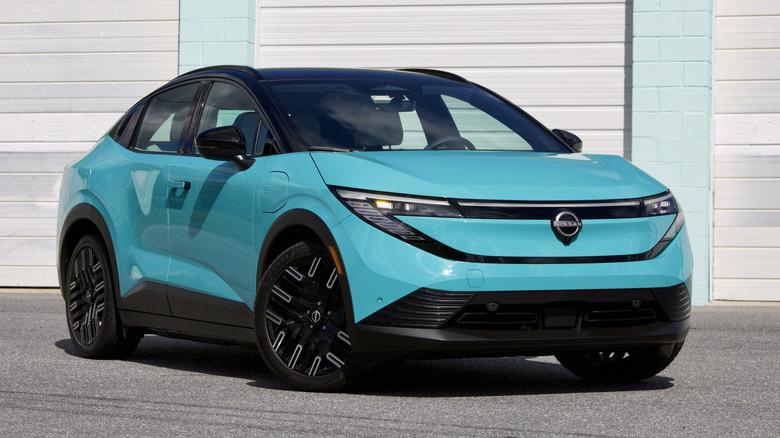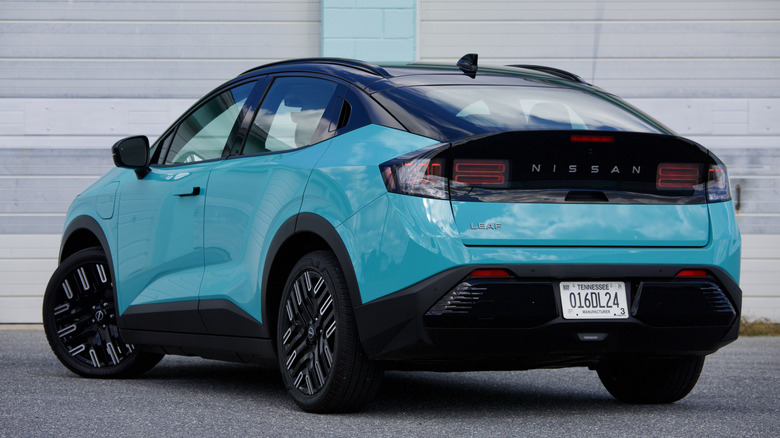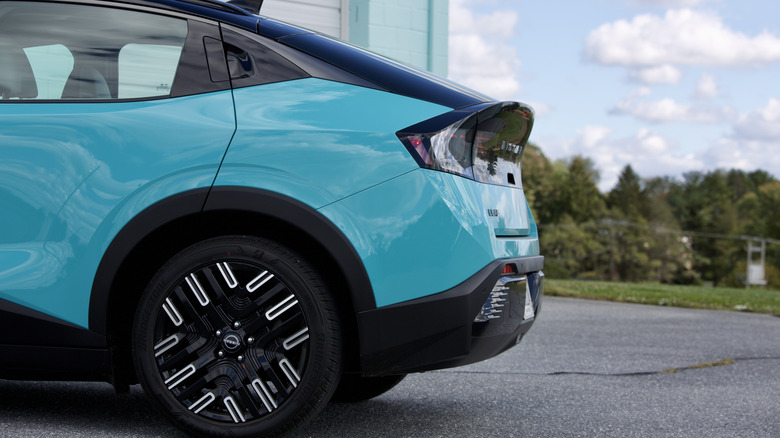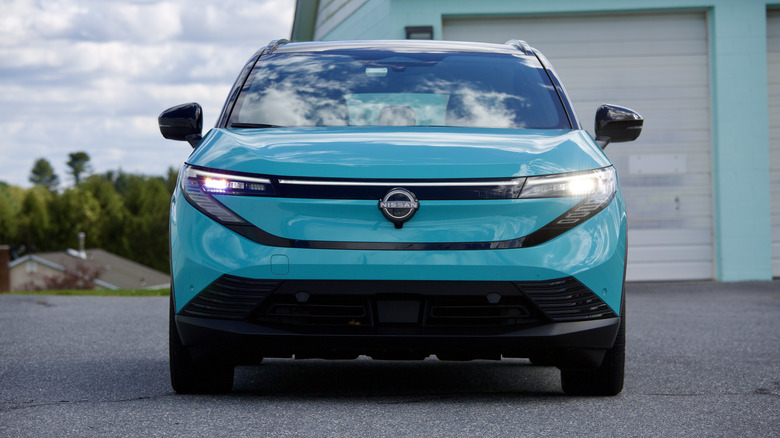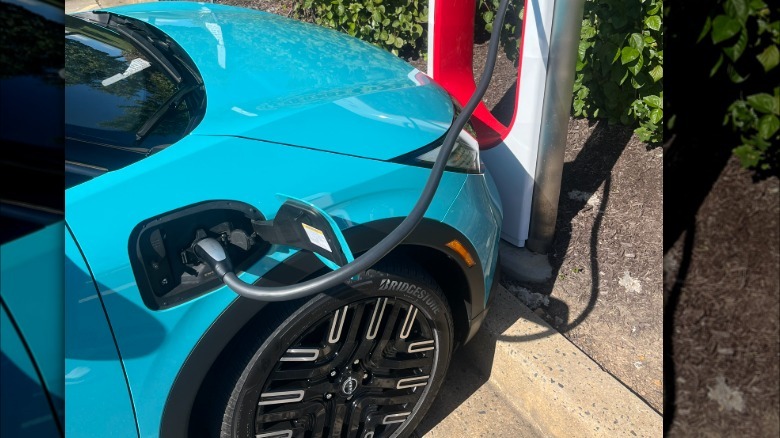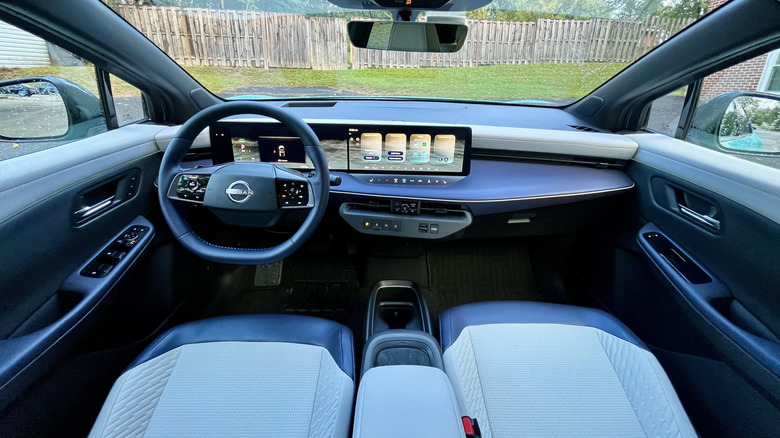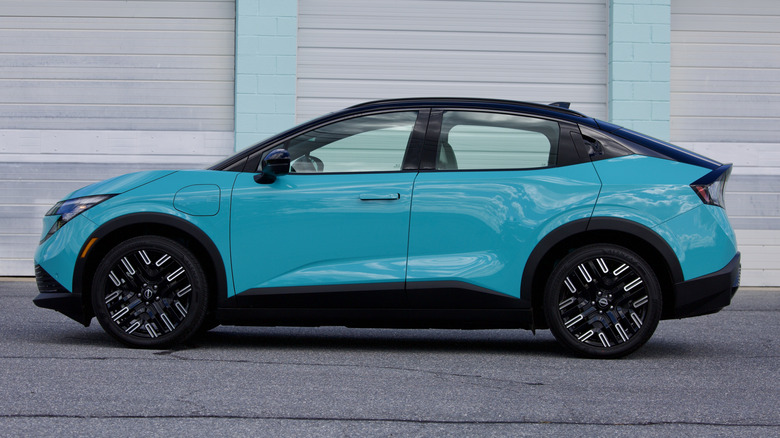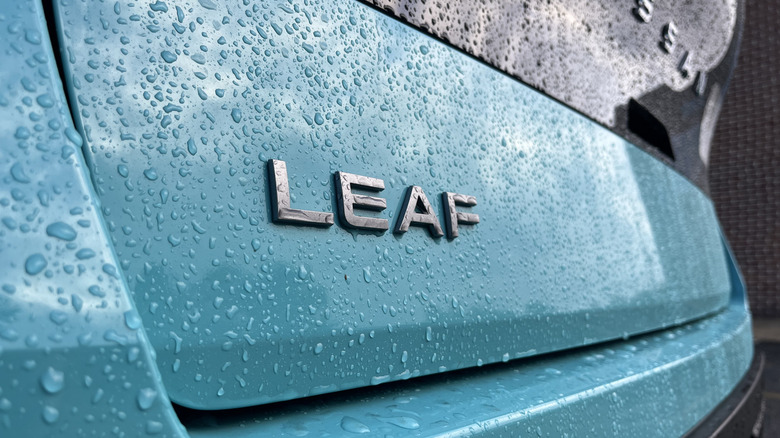Nissan's New 2026 Leaf Finally Delivers On An Old Promise
The pride and joy of Nissan's EV efforts, the Leaf, is back and supposedly better than ever. It's definitely bigger than the previous Leaf, that's for sure. While I've driven a number of different Nissan's over the years, my personal history with the Leaf goes back pretty far. Way back in 2014, I had the privilege (?) of driving a first generation Leaf. I, at over six feet tall, could just about barely fit in the front seat comfortably, but even then, I could see the potential of a compact EV for daily driving. Two model generations generally failed to fully deliver on that promise, as, on average, a Nissan Leaf didn't have enough range to be competitive or sit at a price people agreed with.
Fast-forward to 2025, and Nissan has completely redone the Leaf to aim right at the throats of companies like Tesla. Instead of the Tesla Model 3 or Hyundai Ioniq 5 charging in everyone's driveway, Nissan wants a Leaf to take the spot. The new Leaf has a bigger battery, more room, an entirely different profile, and the ability to charge at a Tesla Supercharger.
The bigger and better Leaf
An economical crossover-shaped EV isn't on my list of the most exciting cars I've been tasked with driving, but it might fit into the "Most Compelling." I was eager to get some seat time after seeing colleagues of mine driving new Leafs around, so when this turquoise electric Nissan showed up silently in the driveway, I was pretty stoked. Was the Leaf truly a better car than the previous generations, and could it actually do what it set out to do 15 years ago?
Nissan is certainly putting its best foot forward. First and foremost, the range has been dramatically improved. While other trim levels, according to Nissan, can exceed 300 miles of range, the higher-trim 2026 Nissan Leaf Platinum+ with 19-inch wheels I drove had a stated range of 259 miles. Providing all the juice is a 75 kilowatt-hour battery. For comparison, the old Leaf had a maximum range of 212 miles from a 60 kilowatt-hour battery. The 2026 Leaf I drove was also front-wheel drive, with a single 214 horsepower motor providing the oomph.
Electrified fun
A little unlike its bigger (and now dearly departed) brother, the Ariya, the Leaf was incredibly smooth, as you would expect from a modern EV. Road noise was certainly present, but it wasn't disconcerting or distracting, and the motor never intruded into the cabin above a reassuring whir. Flipping around the drive modes made a huge difference with how the Leaf behaved. "Sport" mode, as the name would suggest, encourages the Leaf to let its hair down a bit.
It wasn't a sports car, mind you, but it allowed you to use every bit of those 214 electron-driven horses. Please read this next sentence with the disclaimer that I am a Professional Driver on a Closed Course, but I can attest that given the right amount of throttle pressure and sawing of the steering wheel, you can get the Leaf to peel out when turning a corner. Do Not Attempt. It's certainly capable of having fun.
Getting some help from Tesla
Despite the fun that can be had with a little over 200 horsepower, I lived with the Leaf in "Eco" mode most of the time. It cut the power output and allowed the Leaf to cruise for a lot longer. The window sticker of the Leaf may say 259 miles of range in big bold lettering, but the 300-ish mark was really more accurate if you were conscientious. Charging the Leaf was pretty straightforward as well, as there are Tesla Superchargers at nearly every gas station near me.
I will note, however, that you have to park extremely close to the charger. Tesla's Superchargers often have frustratingly short cords designed for Tesla cars and seemingly no one else, despite Tesla's own verbiage saying that the network is open to every automaker that wants to use it. Additionally, I was able to find a few Level 2 chargers in Baltimore's historic Fells Point neighborhood, and over a long evening enjoying the sights and sounds, I was able to recover about 40% charge.
Outclassed by the interior
The interior, as I alluded to earlier, is a lot bigger than the Leaf of yore. The old Leaf had a stated cargo capacity of 30 cubic feet; the new Leaf bumps that up to 55.5 cubic feet. That's not quite SUV levels of space, but it's certainly enough to carry around a decent amount of stuff. Helping a friend out in Fells Point with their businesses, we used every cubic foot on offer in the Leaf. Comfort-wise, the Platinum trim was nice, as that gave you a Bose sound-system and a leather-adjacent fabric called "TailorFit."
It wasn't a Mercedes by any means when it came to interior comfort, but it was certainly comfy. The infotainment and heads-up displays were easy to interpret and navigate, and charging info was easy to find. Normally, I am at war with technology and technology is coldly indifferent to me, like a paper airplane fighting an aircraft carrier, but I can happily say that a treaty was signed with the Leaf.
A pricing problem
If I had any complaints about the Leaf, it would be monetary. The Platinum-trimmed Leaf defeats the purpose a little bit. The base model Leaf, with identical mechanical specifications, is priced at $29,990 before destination, making it the least expensive EV you can buy. The Platinum+ trim — which includes 19-inch wheels, the aforementioned Bose sound system, a heads up display, and ambient lighting — bumps that up by a lot, starting at $38,990.
The Leaf I drove was at least only lightly optioned. The floor mat package is $345; the Battery Heater, to ensure your battery is at the optimal temperature while charging, is $300 extra. Lastly, the "Sea Breeze Blue Pearl/ Super Black" two-tone paint will set you back $800. The destination fee of $1,495 gets you to the final price of $41,930.
It's feature-packed for sure, it has rain-sensing wipers, an eight-way power front seat, a litany of safety sensors, and multiple ways to charge your devices (it is a rolling battery after all). But is all that necessary? The Leaf is just now getting to be competitive with the other EV giants and it might be the price of arguably needless extras that lose the war. MSRP sells cars first, features often come second.
2026 Nissan Leaf verdict
That price puts the Leaf right between the Tesla Model 3 and Hyundai Ioniq 5 respectively. Almost $42,000 for an EV that still has less maximum range is a tough pill to swallow, and I can't help but feel like Nissan's higher trim defeats the purpose just a little bit. At $30,000, the Leaf is one of the best EV deals on the market — outside of whatever wild lease deals are happening elsewhere — but over $40,000, it blends into the rest of the pack. Compare the Leaf to something like a Chevy Equinox EV, a bigger car with more range (319 miles) that starts at $31,995, and the gulf of pricing expands even further.
I really liked the 2026 Nissan Leaf. it's better in just about every way than the old Leaf, and if I was in the market for an EV, a base model Leaf would be high on the list of candidates. Emphasis, there, on just the base model: Bells and whistles are nice, but if they conflict with the mission statement of a vehicle, they're just extra noise.
